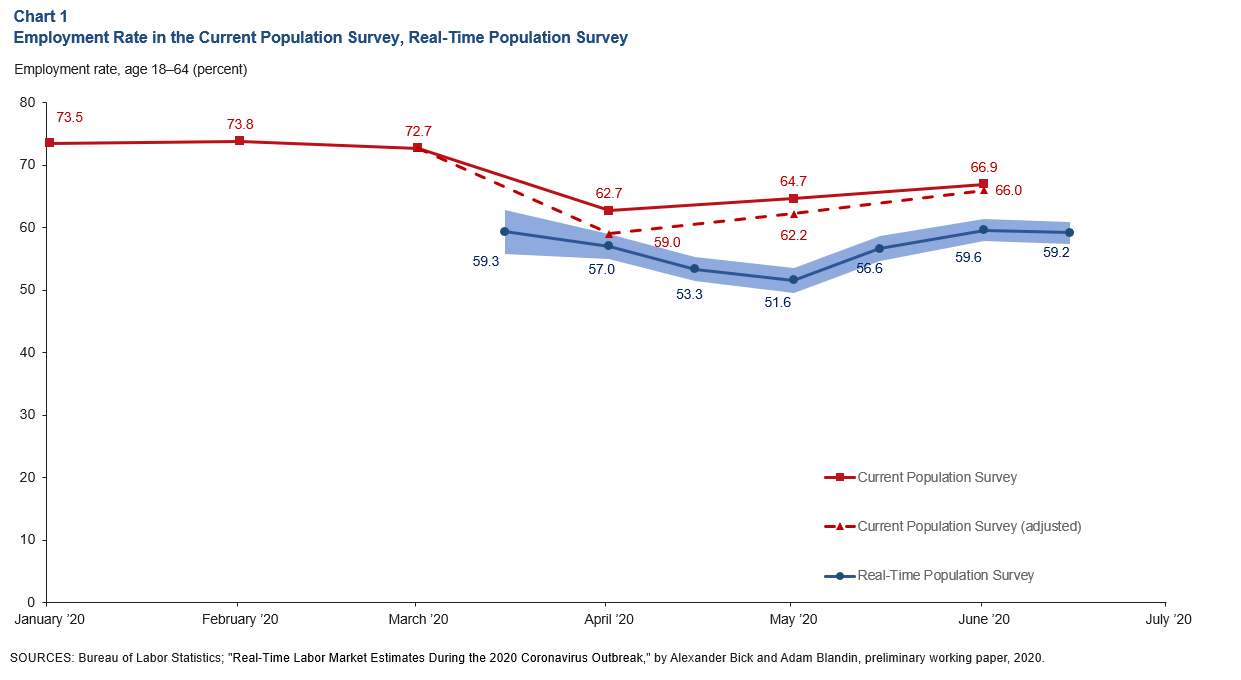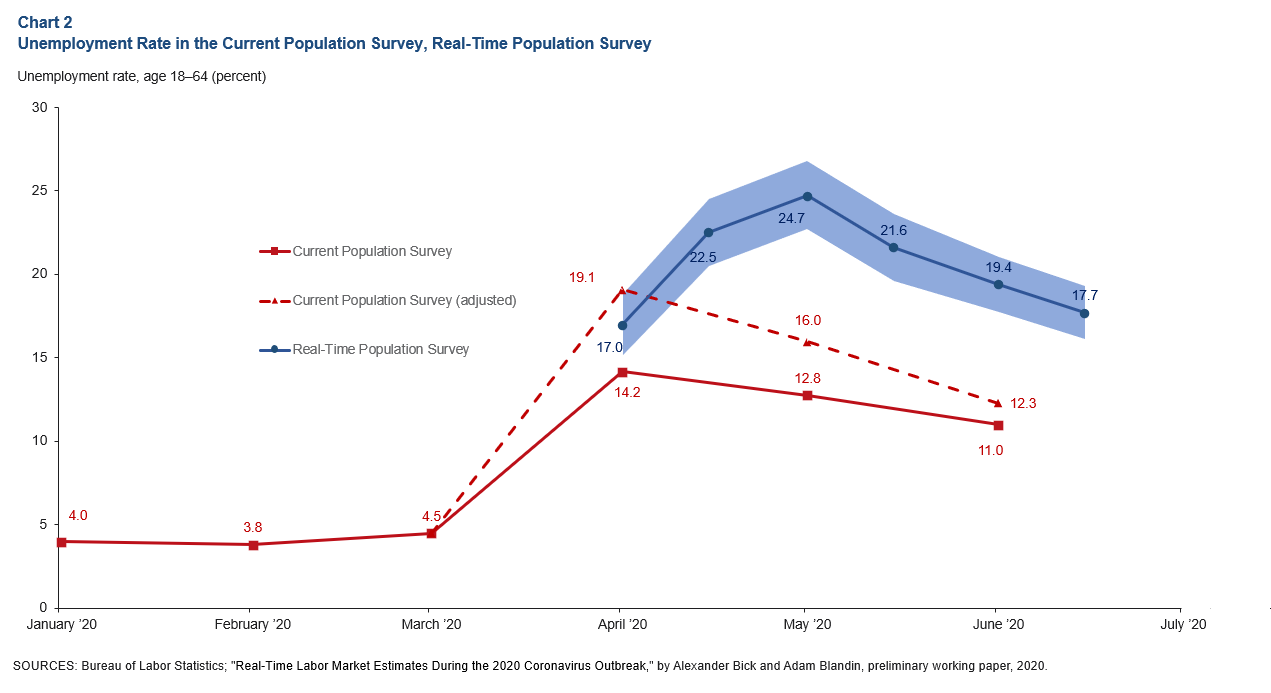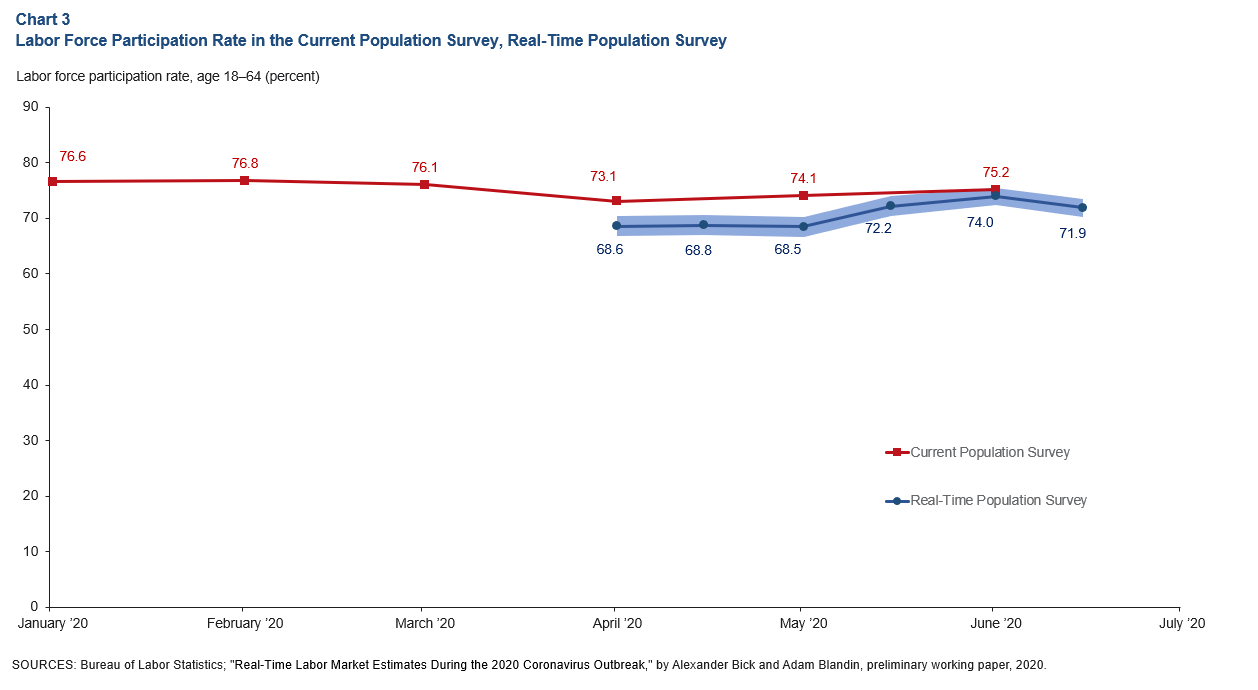
U.S. Economy
Real-Time Population Survey (RPS)
July 2, 2020
Employment Rate Little Changed in Late June
- The employment rate for working-age adults (18–64) was 59.2 percent in the RPS for the week of June 28–July 4, a small decline relative to the estimate of 59.6 percent for the week of June 7–13, which is within the survey’s margin of error.
- In mid-June, the RPS employment rate of 59.6 percent was below the most recent Current Population Survey (CPS) estimate of 66.9 percent for working-age adults (18–64). The Bureau of Labor Statistics, which draws on the CPS for its unemployment rate report, continues to report that some individuals “with a job but absent from work because of the coronavirus” were misclassified as employed during the CPS interviewing process.
In contrast, the RPS did not record an unusually high number of persons not at work, suggesting that the same misclassification did not occur in the RPS. Reclassifying the individuals absent from work in the CPS survey leads to an adjusted employment rate among working-age adults of 66.0 percent for the week of June 7–13. This is still substantially above the RPS estimated employment rate.

Unemployment Rate Slips Lower
- The unemployment rate in the RPS was 17.7 percent for June 28–July 4, a decrease from 19.4 percent for June 7–13.
- In mid-June, the RPS unemployment rate of 19.4 percent exceeded the official CPS estimate of 11.0 percent for working-age adults (18–64). The RPS rate also surpassed the alternate estimate of 12.3 percent after reclassifying those “absent from work because of the coronavirus’’ as unemployed.

Labor Force Participation Drops in Most Recent Period
- The labor force participation rate was 71.9 percent in the RPS for June 28–July 4, a decrease from 74.0 percent for June 7–13.
- In mid-June, the RPS participation rate of 74.0 percent was slightly below the CPS estimate of 75.2 percent. The CPS result is within the margin of error for the RPS, meaning that there is no statistical difference between the two.

RPS Authors
The RPS was developed by Alexander Bick, an associate professor at WP Carey School of Business at Arizona State University; Adam Blandin, an assistant professor in the Department of Economics at Virginia Commonwealth University; in collaboration with Karel Mertens, a senior economic policy advisor in the Research Department at the Federal Reserve Bank of Dallas.